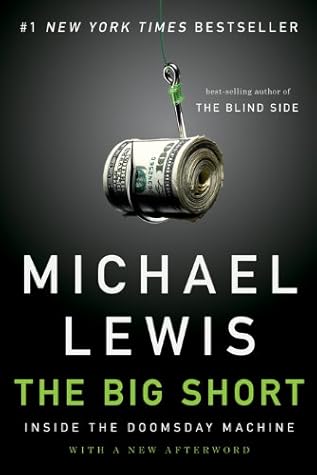More on this book
Community
Kindle Notes & Highlights
The big fear of the 1980s mortgage bond investor was that he would be repaid too quickly, not that he would fail to be repaid at all.
“Any business where you can sell a product and make money without having to worry how the product performs is going to attract sleazy people.
The accounting rules allowed them to assume the loans would be repaid, and not prematurely. This assumption became the engine of their doom.
How do you make poor people feel wealthy when wages are stagnant? You give them cheap loans.
“When you’re a conservative Republican, you never think people are making money by ripping other people off,” he said. His mind was now fully open to the possibility. “I now realized there was an entire industry, called consumer finance, that basically existed to rip people off.”
A couple of years earlier, he’d discovered credit default swaps. A credit default swap was confusing mainly because it wasn’t really a swap at all. It was an insurance policy, typically on a corporate bond, with semiannual premium payments and a fixed term. For instance, you might pay $200,000 a year to buy a ten-year credit default swap on $100 million in General Electric bonds. The most you could lose was $2 million: $200,000 a year for ten years. The most you could make was $100 million, if General Electric defaulted on its debt any time in the next ten years and bondholders recovered
...more
The most you could lose were the chips you put on the table; but if your number came up you made thirty, forty, even fifty times your money. “Credit default swaps remedied the problem of open-ended risk for me,” said Burry. “If I bought a credit default swap, my downside was defined and certain, and the upside was many multiples of it.”
If you wanted to predict how people would behave, Munger said, you only had to look at their incentives.
The CDO was, in effect, a credit laundering service for the residents of Lower Middle Class America. For Wall Street it was a machine that turned lead into gold.
In Bakersfield, California, a Mexican strawberry picker with an income of $14,000 and no English was lent every penny he needed to buy a house for $724,000.
Financial options were systematically mispriced. The market often underestimated the likelihood of extreme moves in prices. The options market also tended to presuppose that the distant future would look more like the present than it usually did. Finally, the price of an option was a function of the volatility of the underlying stock or currency or commodity, and the options market tended to rely on the recent past to determine how volatile a stock or currency or commodity might be.
The triple-A ratings gave everyone an excuse to ignore the risks they were running.
“The upper classes of this country raped this country. You fucked people. You built a castle to rip people off. Not once in all these years have I come across a person inside a big Wall Street firm who was having a crisis of conscience. Nobody ever said, ‘This is wrong.’ And no one ever gave a shit about what I had to say.”
By late September 2008 the nation’s highest financial official, U.S. Treasury Secretary Henry Paulson, persuaded the U.S. Congress that he needed $700 billion to buy subprime mortgage assets from banks. Thus was born TARP, which stood for Troubled Asset Relief Program. Once handed the money, Paulson abandoned his promised strategy and instead essentially began giving away billions of dollars to Citigroup, Morgan Stanley, Goldman Sachs, and a few others unnaturally selected for survival.
For instance, the $13 billion AIG owed to Goldman Sachs, as a result of its bet on subprime mortgage loans, was paid off in full by the U.S. government: 100 cents on the dollar. These fantastic handouts—plus the implicit government guarantee that came with them—not only prevented Wall Street firms from failing but spared them from recognizing the losses in their subprime mortgage portfolios. Even so, just weeks after receiving its first $25 billion taxpayer investment, Citigroup returned to the Treasury to confess that—lo!—the markets still didn’t trust Citigroup to survive. In response, on
...more
By then it was clear that $700 billion was a sum insufficient to grapple with the troubled assets acquired over the previous few years by Wall Street bond traders. That’s when the U.S. Federal Reserve took the shocking and unprecedented step of buying bad subprime mortgage bonds directly from the banks. By early 2009 the risks and losses associated with more than a trillion dollars’ worth of bad investments were transferred from big Wall Street firms to the U.S. taxpayer.


